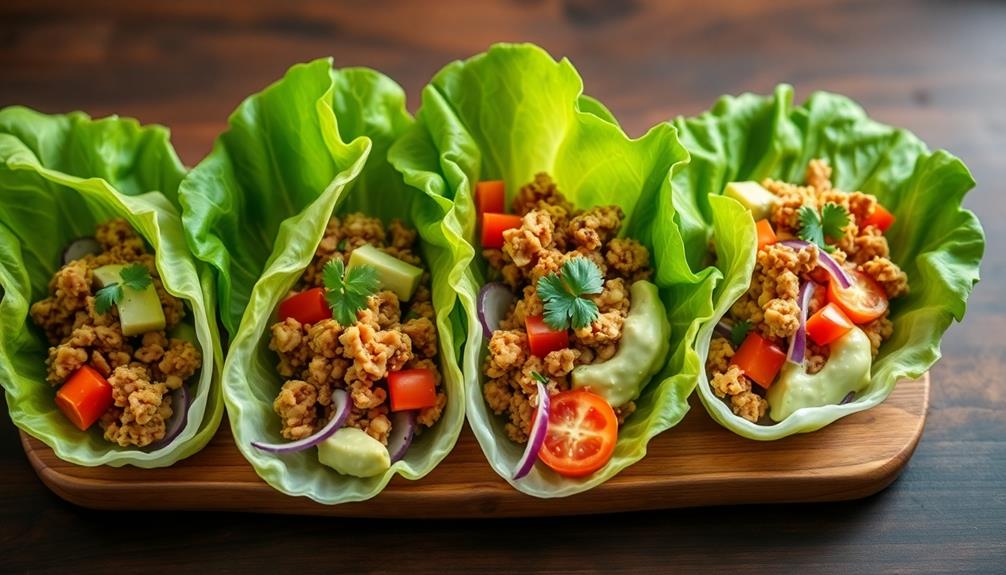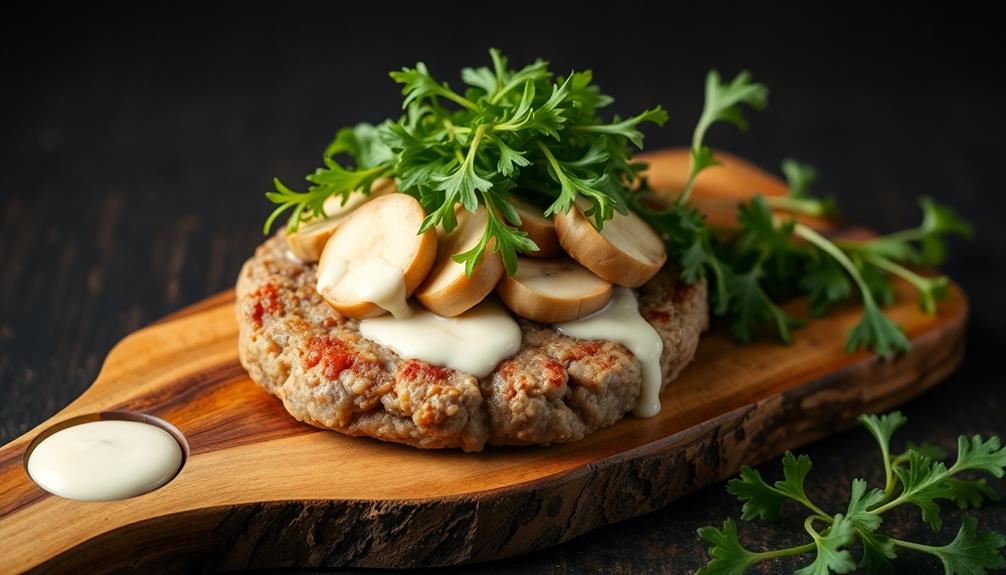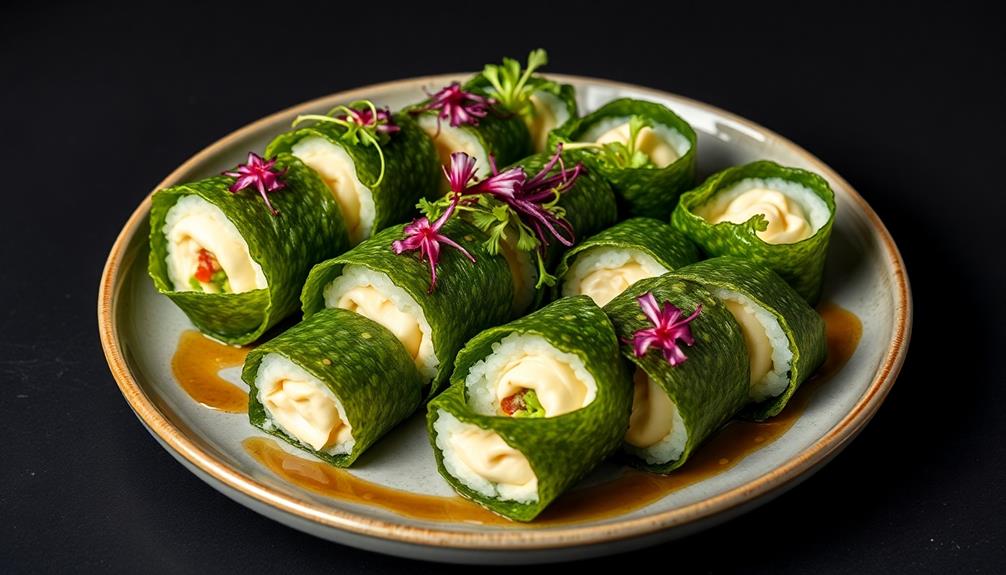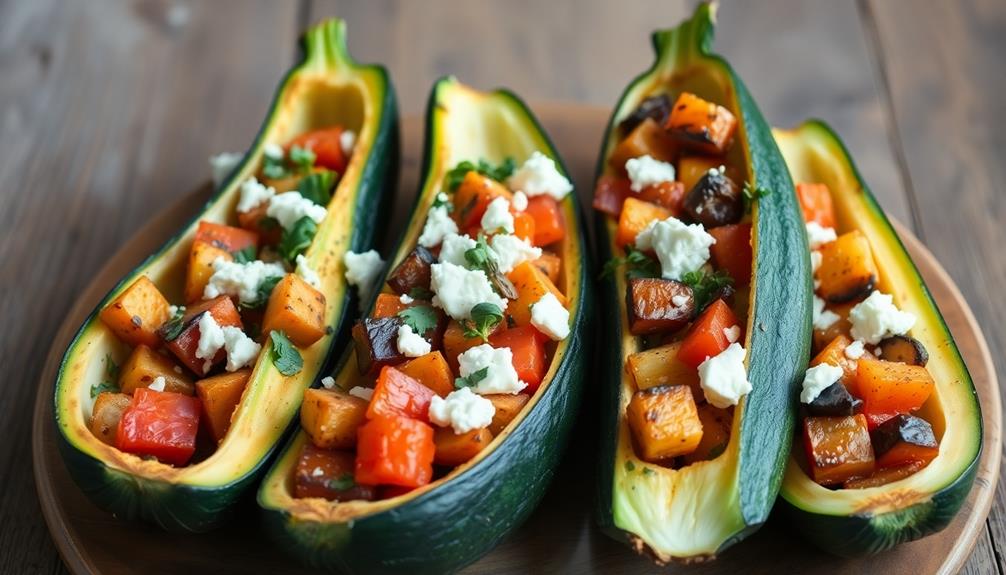You'll absolutely love whipping up these fresh and crunchy raw taco wraps with tasty walnut "meat"! This healthy alternative to classic tacos features bright veggies, creamy avocado, and a satisfying nut-based filling – all nestled in crisp lettuce leaves. It's a delightful way to enjoy the vibrant flavors of a taco while keeping things light and nutritious. Just soak the walnuts, blend them into a crumbly "meat", then load up your lettuce cups and get ready for a truly delicious and energizing meal or snack. With endless possibilities for customization, you'll be craving these raw taco wraps again and again!
Key Takeaways
- Raw taco wraps provide a healthy, plant-based alternative to traditional tacos, featuring fresh ingredients like romaine lettuce, tomatoes, and avocado.
- Walnut "meat" offers a satisfying, cholesterol-free filling that is high in healthy fats and protein, suitable for vegan and plant-based diets.
- The raw, unprocessed ingredients in the recipe retain maximum nutrients and support digestive health, energy levels, and overall well-being.
- Minimal preparation time is required, making the raw taco wraps ideal for quick meals, snacks, or gatherings.
- The recipe allows for endless customization of toppings and flavors, encouraging culinary creativity and experimentation with different raw vegetables and spices.
History

Over the years, raw taco wraps have become a popular culinary trend, offering a healthier alternative to traditional taco fillings. These delightful wraps have roots dating back to the raw food movement, which encourages eating unprocessed, plant-based foods in their natural state.
Pioneered by health enthusiasts, raw taco wraps feature a variety of fresh, crunchy veggies, nuts, and flavorful seasonings, all wrapped up in a soft, pliable base like collard greens or lettuce. The high fiber content in these wraps can improve digestion and contribute to increased energy levels, making them a refreshing option for those seeking a nutritious meal.
Additionally, the vibrant colors and diverse textures of these wraps not only appeal to the eye but also ensure a satisfying eating experience while enhancing skin health.
The appeal of raw taco wraps lies in their vibrant colors, diverse textures, and bold flavors. Instead of ground beef or cheese, these wraps feature creative fillings like walnut "meat," avocado, and zesty salsa.
Recipe
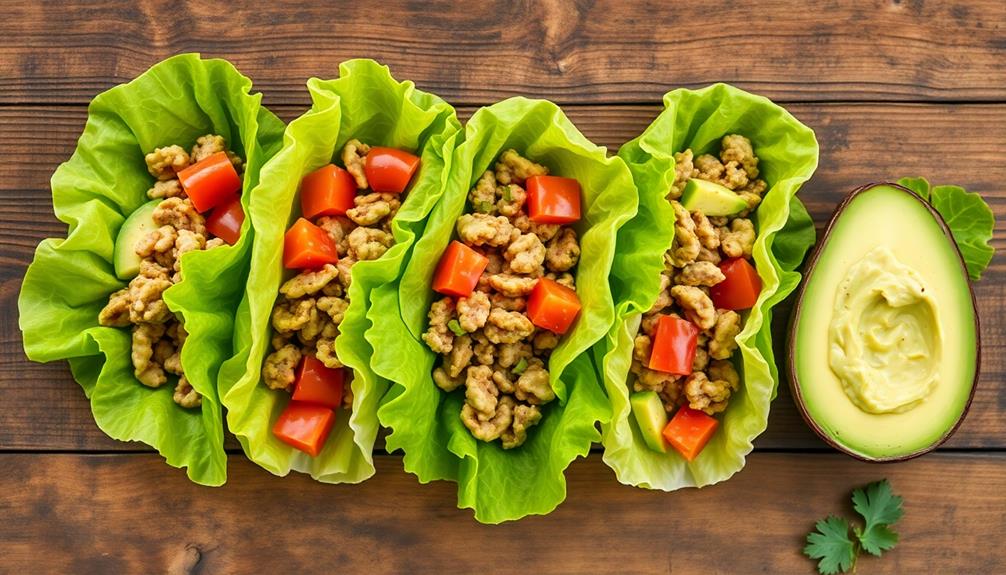
Raw Taco Wraps
Recipe
These raw taco wraps are a delicious and healthy alternative to traditional tacos. Made with fresh, vibrant ingredients, they're packed with flavor and nutrients. Enjoy them as a light meal or snack, perfect for those looking to incorporate more raw, plant-based foods into their diet.
The key to these wraps is the use of fresh, seasonal produce and a simple, flavorful filling. The toppings can be customized to your liking, making this a versatile and adaptable recipe.
Ingredients:
- Romaine lettuce leaves
- Diced tomatoes
- Sliced avocado
- Shredded red cabbage
- Diced red onion
- Chopped cilantro
- Cashew cheese (or vegan sour cream)
- Lime wedges
Instructions:
In a large bowl, combine the diced tomatoes, sliced avocado, shredded red cabbage, diced red onion, and chopped cilantro. Gently toss to mix.
Spoon the filling into the romaine lettuce leaves, and top with a dollop of cashew cheese (or vegan sour cream). Serve with lime wedges on the side.
Tips:
For best texture and flavor, use fresh, ripened produce. The romaine lettuce leaves should be crisp and sturdy enough to hold the filling.
Adjust the fillings to your taste preferences, adding more or less of any ingredient as desired. Enjoy these raw taco wraps as a light, refreshing meal or snack.
Cooking Steps
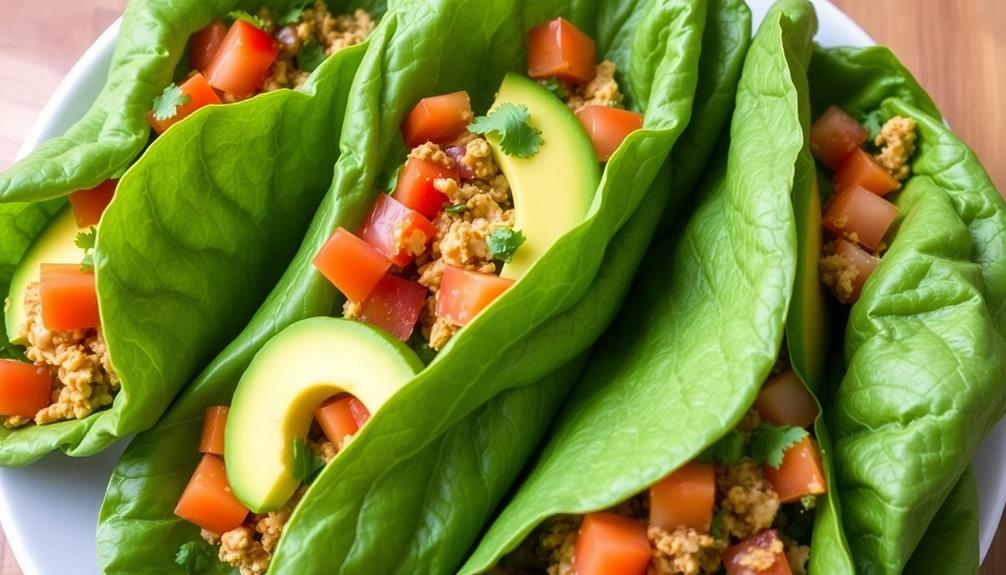
Soak those walnuts in water overnight to soften them up.
While you're at it, consider using eco-friendly ingredients for a healthier meal, as they align with eco-friendly and safe materials for toys.
Blend the soaked walnuts into a delightful crumble.
Now, wrap that nutty goodness in crisp lettuce leaves and you're all set to enjoy your raw taco wraps – chilled or at room temperature, whichever you prefer!
Step 1. Soak Walnuts in Water Overnight
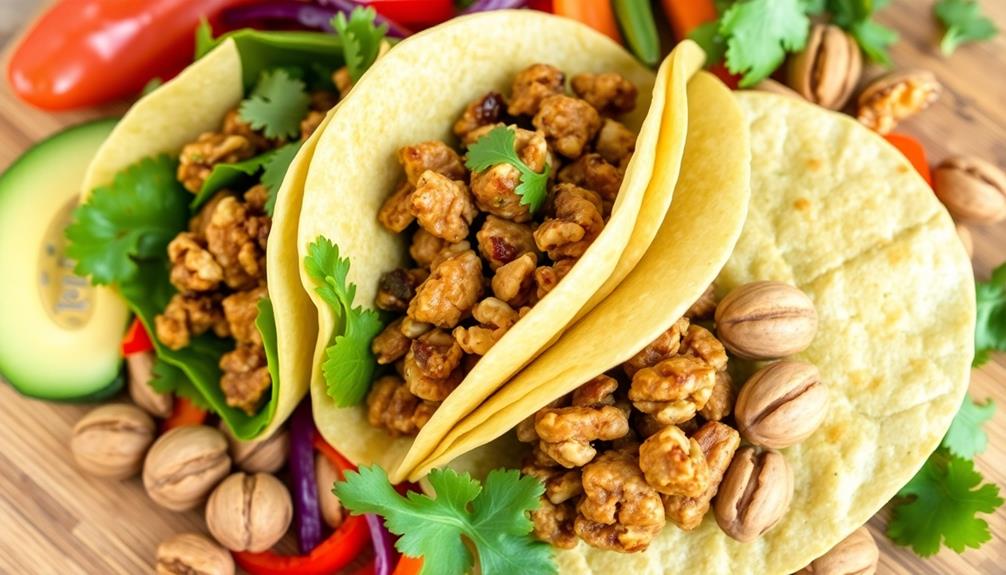
Before preparing the wraps, you'll want to soak the walnuts in water overnight. This simple step helps soften the walnuts, making them easier to blend into a tasty "walnut meat" later on. Just place the walnuts in a bowl, cover them with water, and let them sit for 8 to 12 hours.
When you're ready to start cooking, drain the walnuts and rinse them under fresh water.
Soaking not only enhances the texture but also facilitates better digestion, allowing for the release of nutrients. This process can also be likened to how aromatherapy can stimulate the limbic system, impacting emotions and enhancing well-being.
Now, you may be wondering, "Why do I need to soak the walnuts?" Well, soaking helps break down the walnuts' tough outer layer, allowing them to become nice and soft. This makes it a breeze to transform them into the perfect taco filling.
The soaked walnuts will blend up smooth and creamy, with a delicious nutty flavor that pairs perfectly with the other taco ingredients.
Step 2. Blend Soaked Walnuts Into Crumble
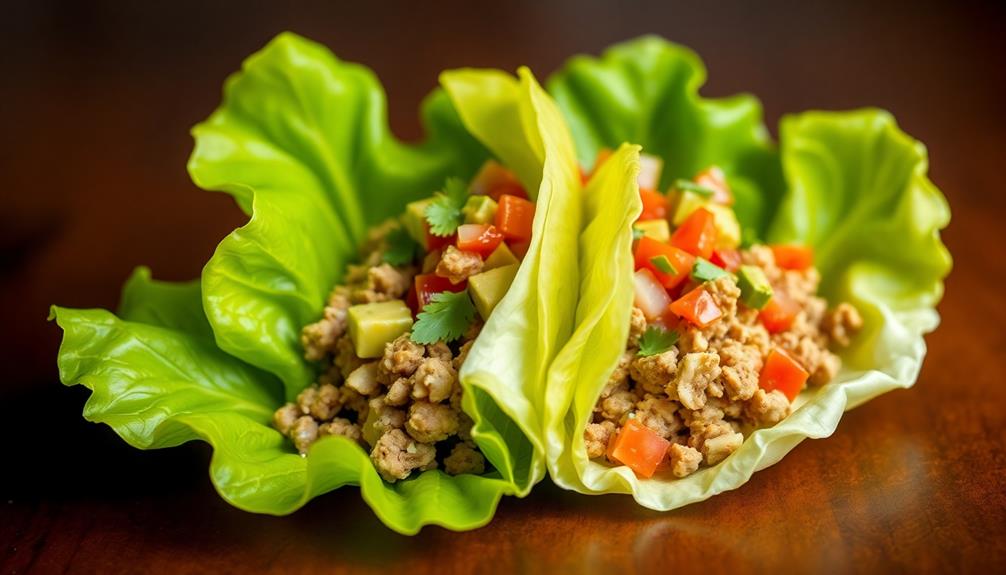
Blending the soaked walnuts into a crumbly "walnut meat" is the next step in crafting your raw taco wraps.
First, drain the walnuts thoroughly, removing any excess water.
Then, add the walnuts to your high-speed blender or food processor. Pulse the machine a few times, stopping to scrape down the sides as needed. You want to achieve a texture that's similar to ground beef, with some small chunks remaining for a nice bite.
Don't overblend, or you'll end up with a smooth, pasty consistency.
Once the walnut crumble is ready, transfer it to a bowl and set it aside. This versatile "meat" will be the base for your tasty taco filling.
Feel free to season it with your favorite spices, like cumin, chili powder, or garlic powder, to amp up the flavor.
Now you're one step closer to assembling those delicious raw taco wraps!
Step 3. Add Lettuce

To assemble your raw taco wraps, first grab some large lettuce leaves. These will act as the "taco shells" to hold all the delicious fillings.
Gently rinse the lettuce leaves and pat them dry with a clean towel. Arrange the crisp, fresh leaves on your work surface, ready to be stuffed.
Next, take a couple of spoonfuls of your walnut meat mixture and place it in the center of each lettuce leaf. Spread it out, leaving a bit of space around the edges. This will make it easier to wrap up your taco.
Now it's time to add your favorite toppings! Chopped tomatoes, sliced avocado, and a sprinkle of chopped onion would all be tasty choices.
Feel free to get creative and customize your wraps to your liking.
Step 4. Wrap Walnuts in Lettuce Leaves
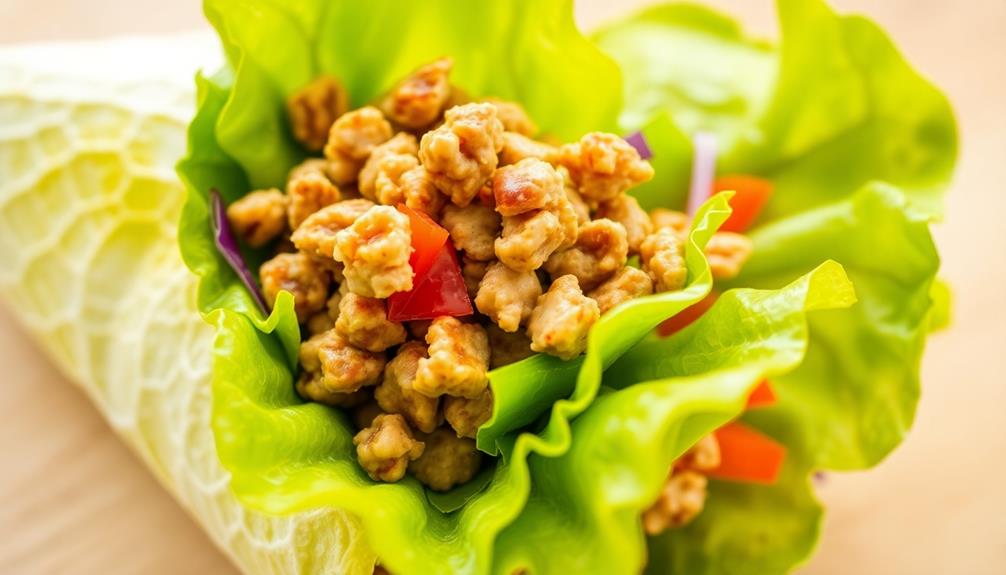
Now that you have the lettuce leaves ready, it's time to wrap up your walnut meat filling.
Grab a crisp lettuce leaf and scoop a heaping tablespoon of the savory walnut mixture onto the center. Gently fold the sides of the leaf over the filling, then roll it up like a little burrito.
Doesn't that look delicious? Repeat this process with the remaining lettuce leaves until you've wrapped up all the walnut meat.
The crunchy lettuce adds a refreshing contrast to the meaty texture of the walnuts. Plus, the leaves act as the perfect edible vessel for holding your tasty taco filling.
Feel free to get a bit messy – that's part of the fun! Once you've wrapped everything up, you're ready to dig in.
These raw taco wraps make for a satisfying and nutritious snack or light meal. Enjoy your handheld lettuce-wrapped delights!
Step 5. Serve Chilled or at Room Temperature
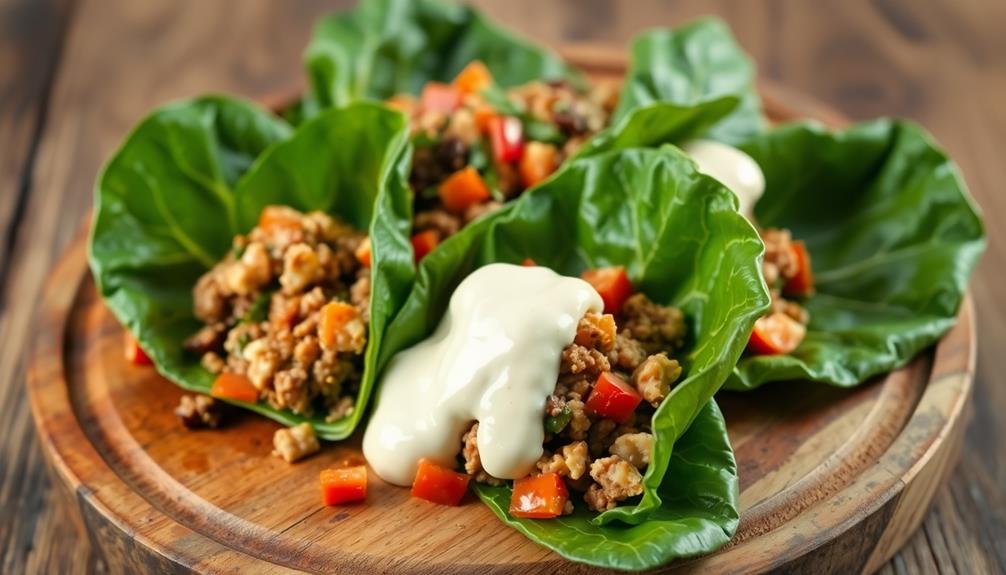
The raw taco wraps can be served chilled or at room temperature, depending on your preference. If you'd like to enjoy them on a warm day, go ahead and pop them in the fridge for 30 minutes or so. The cool temperature will be super refreshing!
On the other hand, if you're in the mood for something a bit cozier, you can leave them out on the counter to reach room temperature. Either way, the flavors will be delicious.
The walnut "meat" and crunchy veggies taste fantastic when they're nice and cool, but they're also scrumptious when they're at a comfortable room temp. Just pick whichever serving style sounds best to you!
You can even try one chilled and one at room temp to see which you like better. Have fun experimenting and see what you enjoy most. The great thing is, these raw taco wraps are totally customizable to your personal taste.
Final Thoughts

After exploring the ins and outs of raw taco wraps, you've likely realized the versatility and health benefits of this dish.
These vibrant, nutrient-packed wraps are a fantastic way to enjoy all the classic taco flavors while skipping the heavy, greasy fried shells. Plus, the walnut "meat" provides a satisfying, meaty texture without the cholesterol of traditional taco fillings.
You can get creative with your toppings, too – try piling on fresh veggies, creamy avocado, tangy salsa, and a sprinkle of nutritional yeast for a boost of cheesy flavor. The possibilities are endless!
And the best part? These raw tacos are a breeze to make, requiring minimal prep time but delivering maximum taste and nutrition.
Frequently Asked Questions
How Long Do the Raw Taco Wraps Last in the Refrigerator?
The raw taco wraps should last 3-5 days in the refrigerator if stored properly in an airtight container. Be sure to refrigerate them as soon as you're done using them to maximize their shelf life.
Can the Walnut Meat Be Substituted With Other Nuts?
You can absolutely substitute the walnut meat with other nuts, like almonds, pecans, or cashews. The key is to use nuts that have a similar texture and flavor profile to the walnuts.
What Is the Nutritional Value of the Raw Taco Wraps?
The nutritional value of raw taco wraps can vary depending on the ingredients used, but they're generally a healthy option packed with fiber, vitamins, and minerals. You'll need to check the specific recipe to get the full nutritional breakdown.
Can the Raw Taco Wraps Be Frozen for Later Use?
You can definitely freeze the raw taco wraps for later use. They'll keep in the freezer for up to 3 months. Just be sure to wrap them tightly to prevent freezer burn. When you're ready to use them, simply thaw them in the fridge overnight.
How Spicy Are the Raw Taco Wraps?
The spiciness of the raw taco wraps can vary depending on the ingredients used. Some recipes may include spicy seasonings or hot sauces, which could result in a moderately spicy dish. However, you can adjust the amount of spicy ingredients to suit your personal taste preferences.

